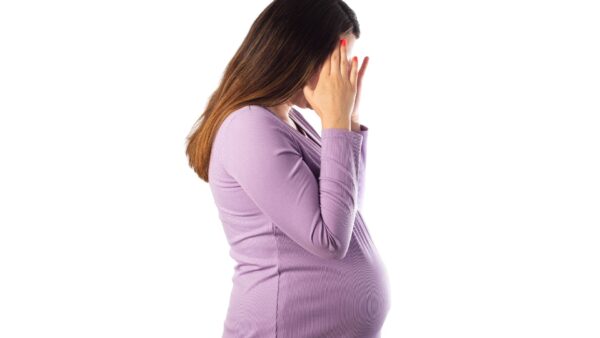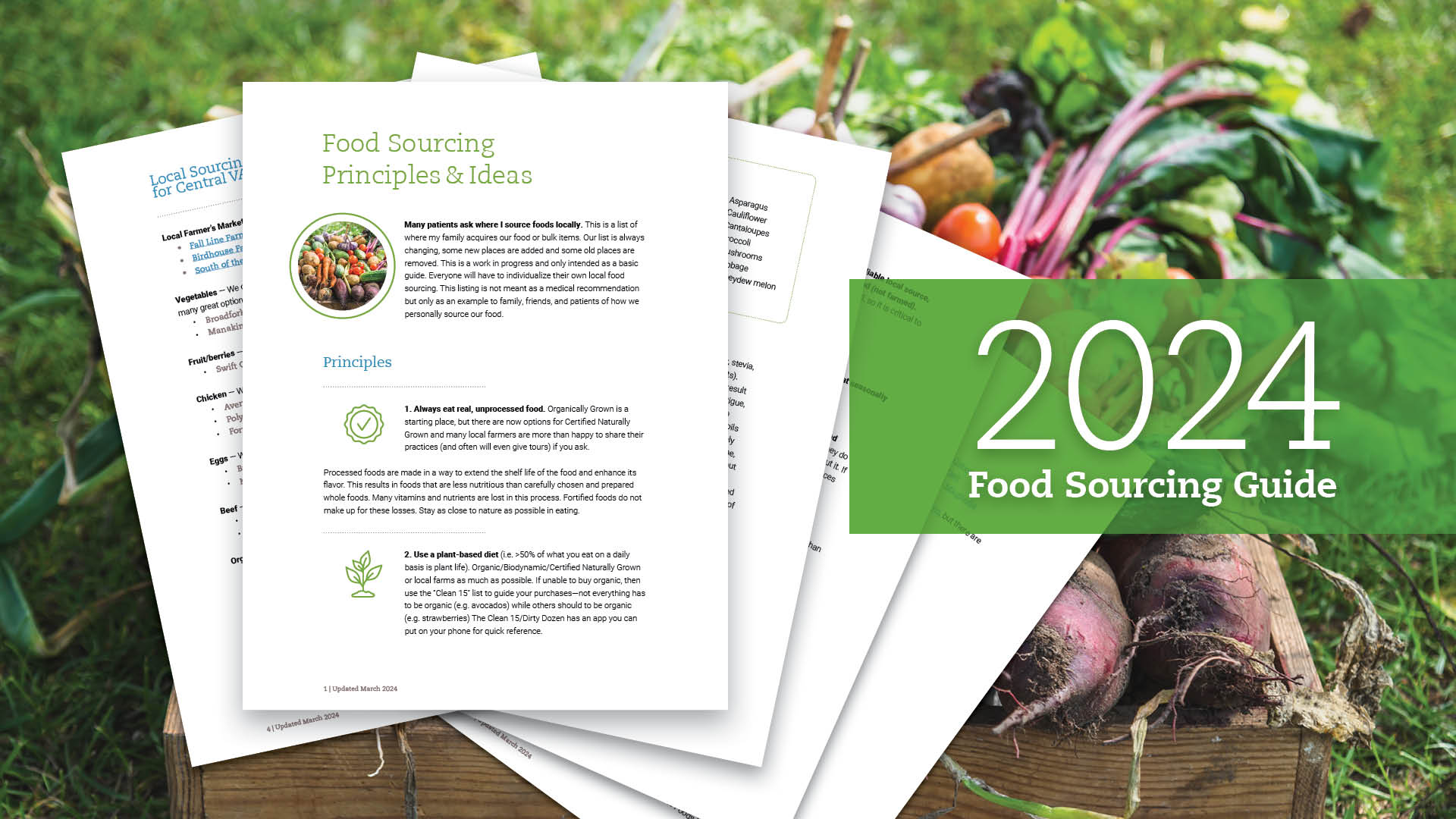Your Hormones in Harmony | Part 5
Estrogen: The Younger Sister

Aaron Hartman MD
February 27, 2024
Subscribe
Never miss out on new content from Dr. Hartman.
Throughout this series, I’ve introduced you to the players in your hormone symphony:
In the next two articles, I’d like to introduce you to the Two Sisters: Estrogen and Progesterone.
When we think about women’s hormones, we usually think of estrogen first. Of course men also need estrogen, just as women also need testosterone, but we tend to think of estrogen as distinctly female. Assuming you have worked through the hormone hierarchy (first addressing cortisol, insulin, thyroid, and gut health) it may now seem appropriate to deal directly with an estrogen issue. But save a seat for her sister, Progesterone. In our next article, we’ll look more closely at the complementary and overlapping roles of these two hormones.

For now, however, let’s talk about the younger sister, Estrogen.
The Importance of Estrogen
Estrogen receptors are found throughout the body – in the brain, muscle, bones, bladder, gut, colon, heart, lungs, blood vessels, eyes, and of course in the uterus, ovaries, and breasts. From this long list, it’s easy to see how having an estrogen imbalance can affect nearly every aspect of your body, including the way you think and feel.
In total there are over 400 critical functions in the body involving estrogen!
Estrogen contributes to the body’s regulation of:
- Body temperature
- Blood pressure
- Energy
- Mood
- Memory
- Focus
- Libido
- Heart health
- Cholesterol
- Bone density
- Blood flow
- Cognitive reasoning
- Skin smoothness
- Eye health
- Many, many more…
Estrogen affects the risk of cardiovascular disease by decreasing LDL and lowering homocysteine. It prevents tooth loss and maintains bone density! Estrogen affects the water content of our skin and makes skin smoother and look younger. It’s easy to see how important estrogen is for general health, and how a deficiency can affect the whole body.
In a nutshell, we need estrogen (to put it mildly). And we tend to feel that powerfully when it’s lacking…
Estrogen Deficiency
Estrogen is another “Goldilocks” hormone — it’s important that you have neither too little, nor too much. You want Estrogen to be “just right.” Of the two extremes, however, it’s more common for women to be concerned with having too little estrogen (for those 400+ critical functions just noted).
Symptoms of Estrogen Deficiency
- Acne
- Arthritis
- Diabetes
- Dry eyes
- High cholesterol
- Depression
- Infertility
- Thinning hair
- Painful sex
- Weight gain (especially around the middle)
- Oily skin
Causes of Estrogen Deficiency
When looking for the cause of an estrogen deficiency in a woman, we must consider her stage of life.

Women can experience deficiency postpartum (after having a baby) and can also experience deficiency after going through menopause. Synthetic estrogen replacement with birth control pills and hormone replacement therapy with synthetic medications can induce a functional estrogen deficiency as well as low thyroid function. In addition, insulin resistance, diabetes, or prediabetes can cause a functional estrogen deficiency.
Premature ovarian failure (when the ovaries stop working) can be caused by chemicals in the environment. In general, chemicals in our environment can act like estrogen in the body and disrupt the production of hormones.
These are a few of the things that can affect hormone levels of estrogen in a woman throughout her lifespan.

Addressing Estrogen Deficiency
Boost Estrogen with Food: As we often say here: food is medicine; hormone health is no exception.
If you’re dealing with low levels and want to increase estrogen, many foods can naturally and effectively boost your hormones. This is particularly useful for women who experience decreasing hormones as they age.
Foods that increase estrogen include:
Vegetables
- Asparagus
- Artichoke
- Cabbage
- Brussel sprouts
- Beets
- Cauliflower
- Eggplant
- Cucumber
- Mustard greens
- Okra
- Bell Peppers
- Parsley
- Pumpkin
- Pumpkin seed
- Tomato
- Spinach
Fruits
- Apples
- Apricots
- Bananas
- Cherries
- Dates
- Grapefruit
- Pear
- Pineapple
Beans
- Chickpeas
- Kidney beans
Nuts and Seeds
Healthy Fats
- Olive oil
- Sunflower oil
- Walnut oil, and even
- Coconut oil
Elevated Estrogen
Symptoms of Elevated Estrogen
- Decreased libido
- Elevated risk of autoimmune disease (especially lupus and rheumatoid arthritis)
- Elevated risk of breast cancer
- Elevated risk of cervical cancer
- Heavy menstrual cycles
- Low thyroid
- Mood swings
- Panic attacks
- Swollen breasts
- Weight gain (especially around the middle)
While estrogen deficiency can be problematic for women, elevated estrogen can increase risks for certain cancers, decrease libido, cause heavy menstrual cycles, cause low thyroid levels, increase mood swings, and cause weight gain.
Causes of Elevated Estrogen
- Low fiber diet
- Environmental estrogens
- Insufficient exercise
- Supplementation overdose
Addressing Elevated Estrogen
Food, Exercise, & Environment
There are a whole host of foods that are well-known to induce detoxification of hormones in the body. This is especially important when you’re supplementing hormones.
Foods to induce detoxification (like excess estrogen) include:
- Cruciferous vegetables (like broccoli, cauliflower, or brussel sprouts)
- Mushrooms (like shiitake or portobello)
- Flax seeds
- Green tea
Fiber: Fiber, first and foremost, is the primary way your body binds estrogen breakdown products in the gut to detoxify it and remove it from the body. This is why I recommend flax seeds, which are high in polyphenols and are very effective at detoxifying hormones. Taking 2 to 4 tablespoons of flax a day is my favorite fiber source to lower estrogen levels and reduce your risk for breast cancer.
 If you’re looking for more solutions to increase your fiber, consider this article: The Fiber Fix: Using Fiber to Enhance Weight Loss, Heart Health, Blood Sugar Management, and Brain Function with Real Food
If you’re looking for more solutions to increase your fiber, consider this article: The Fiber Fix: Using Fiber to Enhance Weight Loss, Heart Health, Blood Sugar Management, and Brain Function with Real FoodGreen Tea: Green tea is also well-known to detoxify estrogen due to its polyphenols, which are anti-inflammatory molecules. These foods are important for those with elevated estrogen and for those using estrogen supplementation of any kind.
Exercise: Lack of exercise can lead to elevated levels of estrogen. It stands to reason, then, that exercise can serve to lower elevated estrogen. Studies have shown that regular, moderate exercise can reduce circulating levels of estrogen in menopausal women.
Weight Loss: Weight loss can also reduce levels of sex hormones.
Environmental Estrogens: Environmental estrogens are another big factor in our hormone health. The many chemicals in our environment, products we put on our bodies and in our bodies often include synthetic estrogen chemicals that can adversely affect our hormones. When treating hormone imbalances, it’s important to remove hormone-disrupting chemicals in our personal care and household products.

Bioidentical Hormone Therapy
When addressing the sex hormones (esp. estrogen and testosterone), I would be remiss if I failed to touch on bioidentical hormone therapy. There are many conversations and opinions on how to treat imbalances and who might be a good candidate for bioidentical hormones. After addressing diet and lifestyle, as discussed above, perhaps you’re considering bioidentical hormones. How should you think about your options?
Important Considerations
Risk of Cancer
When evaluating estrogen replacement therapy, it’s important to consider the risks of too much estrogen, which can increase the likelihood of estrogen-related cancers. In general, I do not recommend estrogen replacement therapy for women who have a history of breast cancer, ovarian cancer, or uterine cancer.

Topical vs. Oral Estrogen Therapy
The second critical consideration is the method. Estrogen should always be supplemented topically through the skin, also known as transdermal hormone replacement.
Taking synthetic or bioidentical hormones orally can cause many problems. Most of the side effects we hear about, such as breast cancer, blood clots, and strokes, revolve around oral administration of synthetic estrogens. Even bioidentical oral estrogens can cause these issues.
Oral estrogen replacement can have various side-effects including:
- High blood pressure
- High triglycerides
- Gall stones
- Liver enzyme elevation
- Reduced growth hormone
- Increased carb cravings
- Increased inflammation
- Increased sex hormone binding globulin (lowers testosterone)
The problem with oral estrogen supplementation is that dosing levels must be so high – usually 8 to 10 times more than needed – to make it past the liver. The liver then breaks the estrogen down, creating metabolites, which are inflammatory, pro-clotting and pro-cancer. So when supplementing estrogen it is important to do so topically.
Your Hormones Need a Holiday Too
Another consideration involves pacing or rhythm. Every woman throughout her cycling period has a natural break from estrogen for about a week out of every month. The time of the month during your period when you’re bleeding is a “hormone holiday.” When giving women supplemental hormones in the menopausal years, we ought to mimic the hormone holiday by skipping weekends, taking off one day a week, or something similar to help replicate this natural cycle.
While pellets and long-term injectable therapies are convenient, they do not allow for hormone holidays, which is a major drawback, as it can be detrimental to long-term health.
Test…Don’t Guess!
How you can figure out if you’re getting overdosed or underdosed using hormone therapy? Ideally you want to test, test, test – don’t guess! I frequently see women who come to my clinic with symptoms of excessive or low estrogen. During testing we sometimes find that they actually have the opposite imbalance than what their symptoms indicated, but their symptoms were due to an imbalance with other hormones. This is, another reminder why I recommend working through the Hormone Hierarchy and only addressing estrogen after we’ve worked through cortisol, insulin, and thyroid hormones.
During testing we sometimes find that they actually have the opposite imbalance than what their symptoms indicated, but their symptoms were due to an imbalance with other hormones.
This discussion is meant to be helpful as a general guide, but when dosing hormones we should always test to determine if there is an imbalance relative to other hormones or if there is an actual deficiency. This is an important distinction. When we just dose to symptoms, hormones can easily be overdosed and, in the long run, women are harmed rather than helped.
I’ve already highlighted the symptoms of elevated estrogen, but I’ll repeat that list here, as estrogen supplementation can easily lead to an imbalance on the side to too much estrogen.
Symptoms of Elevated Estrogen:
- Decreased libido
- Elevated risk of autoimmune disease (especially lupus and rheumatoid arthritis)
- Elevated risk of breast cancer
- Elevated risk of cervical cancer
- Heavy menstrual cycles
- Low thyroid
- Mood swings
- Panic attacks
- Swollen breasts
- Weight gain (especially around the middle)

Benefits of Estrogen Therapy
After all of these side effects and complications around estrogen therapy, you might wonder why we would ever supplement with hormones. Why don’t we just leave them alone?
There are many therapeutic benefits from using hormone therapy (remember those 400 benefits of estrogen noted above?). We can use estrogen therapy to lower the risk of different autoimmune diseases. High levels of estriol (E3) has even been found in trials to help treat multiple sclerosis. Estrogen therapy has been shown to improve cognition, bone loss, heart disease, cataracts, macular degeneration, and also increase a woman’s general sense of well-being. These are all reasons why someone might consider using hormone replacement therapy.
Summary
Understanding and managing estrogen levels is a crucial aspect of maintaining holistic health. Whether you’re dealing with estrogen deficiency or excess, the implications on your overall well-being are significant. By incorporating the right foods, engaging in regular exercise, and being mindful of environmental estrogens, you can take meaningful steps towards balancing this essential hormone. For those considering bioidentical hormone therapy, remember the importance of testing to tailor treatment to your body’s specific needs, and always opt for methods that align with natural hormonal rhythms. I encourage you to not only embrace these insights but also to take proactive measures. Seek the guidance of a healthcare provider who prioritizes a comprehensive approach to hormone health, ensuring that any intervention is both appropriate and personalized to support your unique journey towards optimal wellness.

